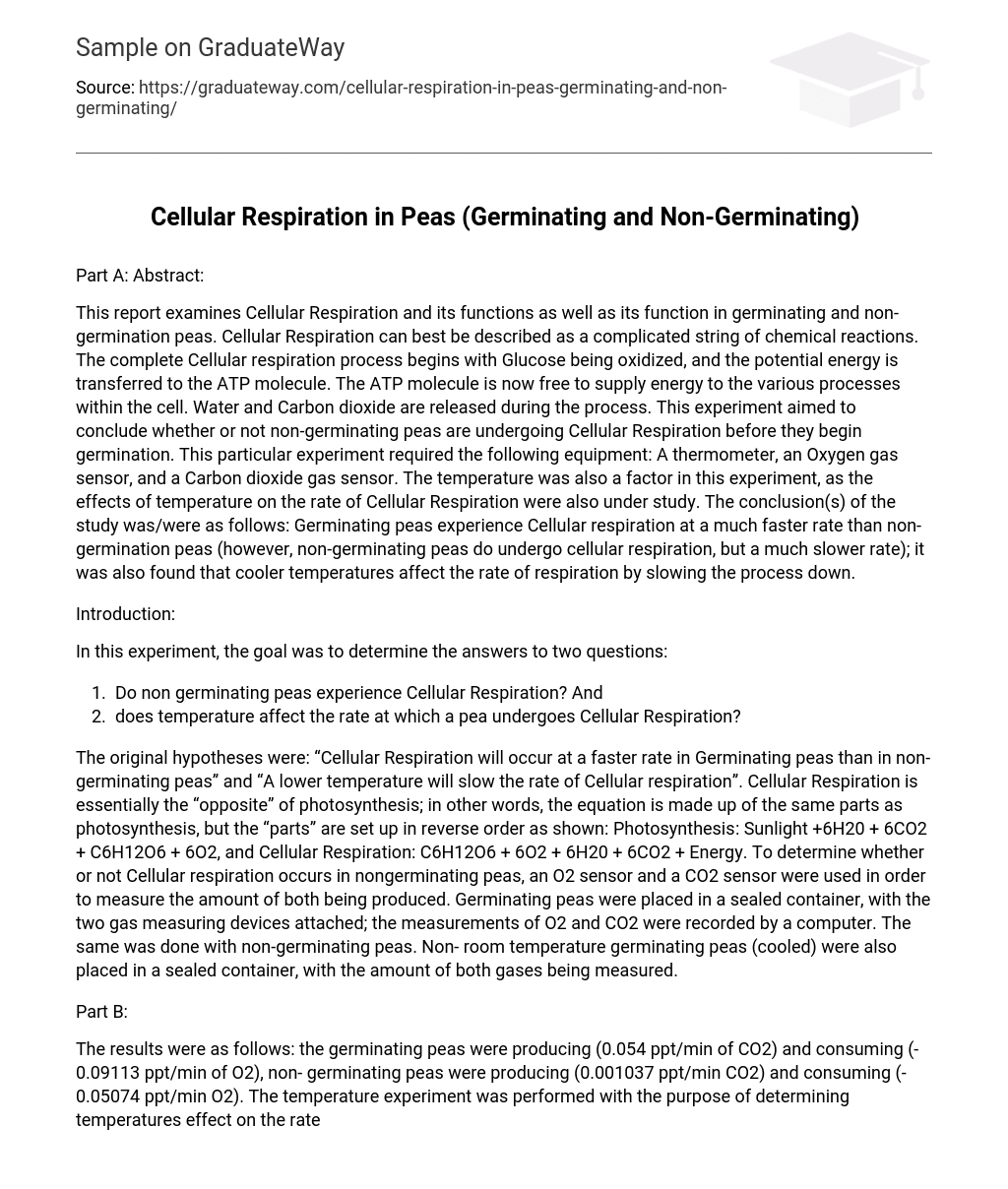Part A: Abstract:
This report examines the role of Cellular Respiration in germinating and non-germinating peas. Cellular Respiration is a complex set of chemical reactions that starts with Glucose oxidation, transferring energy to ATP molecules and providing cellular energy. This process also produces Water and Carbon dioxide as byproducts. The objective was to determine if non-germinating peas undergo Cellular Respiration before germination. To investigate, a thermometer, an Oxygen gas sensor, and a Carbon dioxide gas sensor were used. Temperature was considered as a variable to analyze its impact on the respiration rate. In conclusion, Germinating peas demonstrate a significantly faster rate of Cellular Respiration compared to non-germinating peas (though non-germinating peas still respire at a slower pace). Furthermore, lower temperatures result in deceleration of respiration.
Introduction:
Our aim in this experiment was to ascertain the solutions to two inquiries:
- Do non germinating peas experience Cellular Respiration? And
- does temperature affect the rate at which a pea undergoes Cellular Respiration?
The original hypotheses were: “Cellular Respiration will occur at a faster rate in Germinating peas than in non-germinating peas” and “A lower temperature will slow the rate of Cellular respiration”. Cellular Respiration is essentially the “opposite” of photosynthesis; in other words, the equation is made up of the same parts as photosynthesis, but the “parts” are set up in reverse order as shown:
Photosynthesis: Sunlight +6H20 + 6CO2 + C6H12O6 + 6O2, and
Cellular Respiration: C6H12O6 + 6O2 + 6H20 + 6CO2 + Energy.
To determine whether or not Cellular respiration occurs in nongerminating peas, an O2 sensor and a CO2 sensor were used in order to measure the amount of both being produced. Germinating peas were placed in a sealed container, with the two gas measuring devices attached; the measurements of O2 and CO2 were recorded by a computer. The same was done with non-germinating peas. Non- room temperature germinating peas (cooled) were also placed in a sealed container, with the amount of both gases being measured.
Part B:
The experiment revealed that germinating peas had a CO2 production rate of 0.054 ppt/min and an O2 consumption rate of -0.09113 ppt/min, while non-germinating peas had a CO2 production rate of 0.001037 ppt/min and an O2 consumption rate of -0.05074 ppt/min. The objective of the temperature experiment was to assess the impact of temperature on respiration speed, which showed that lower temperatures led to slower cellular respiration. Germinating peas at room temperature produced 0.054 ppt/min of CO2, whereas those in colder conditions only produced 0.01405 ppt/min of CO2.
These findings confirmed two hypotheses: first, that germinating peas have a faster cellular respiration rate compared to non-germinating peas; and second, that lower temperatures hinder the pace at which germinating peas respire.
Germinating peas undergo Cellular Respiration at a faster rate compared to non-germinating peas. This is because germinating peas receive energy supplies and go through stimulating growth, allowing them to perform Cellular Respiration quickly. On the other hand, non-germinating peas have slower metabolic processes that require less energy. The lower temperature affects metabolic processes by demanding more energy for efficient functioning in most organisms. Conversely, higher temperatures stimulate energy and metabolism. From the experiment results, we can confidently conclude that both germinating and non-germinating peas experience Cellular Respiration, but it occurs much faster in highly active germinating peas at room temperature.





